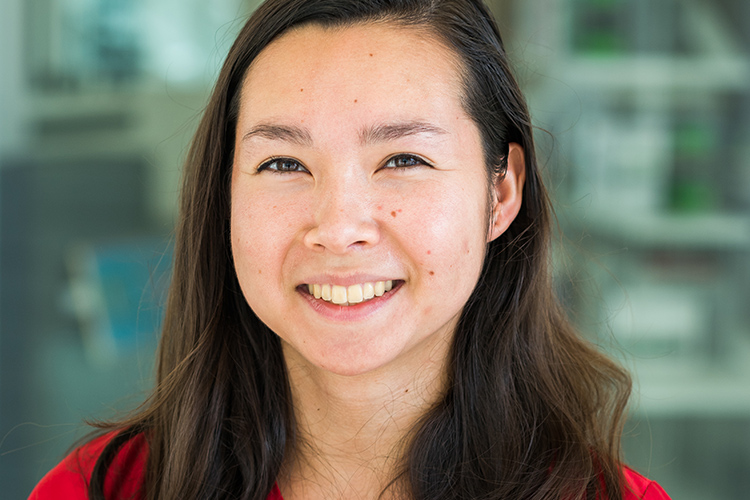First-year fellow Emma is passionate about making global access to high-quality health care more equitable.
Emma Yee is a Tata Fellow and fourth year Ph.D. student in Chemical Engineering at MIT. She got her bachelors degree in Chemical Engineering from Columbia University in New York. She is passionate about global access to health care and in her free time she enjoys hiking, reading, and salsa dancing.
Currently, she is working with Professor Hadley Sikes on developing protein biomarker and DNA-based diagnostic tests for malaria, Zika, and early-stage, drug-resistant tuberculosis on paper platforms with colorimetric readout methods.
What brought you to study at MIT?
Of all the graduate schools I applied to, the professors and students at MIT seemed the most passionate not just about having an impact in Chemical Engineering academia, but also leveraging their resources to tackle pressing global problems, where engineering could help improve access, equality, and security for people worldwide. This socially conscious outlook on the role of engineers resonated with me as someone who majored in Chemical Engineering primarily because the broadly applicable skills it teaches allow one to have a large impact on the most significant societal challenges in health, energy, the environment, consumer production, and myriad other areas.
How did you become interested in public health and, more specifically the infectious disease field?
I have always been fascinated by molecular biology. The unfathomably complicated network of interactions that make possible the diversity of life we see on Earth is amazing, as well as how those networks respond to disruptions. As I mentioned before, I was drawn to Chemical Engineering for its ability to help enact social justice, so I think the product of my passion for biology and passion for social responsibility evolved into an interest in public health, specifically infectious diseases. Infectious diseases are a prime example of how unequal access to resources and unequal focus in engineering R&D can create hugely pressing health (and therefore social and economic) problems.
What are your aspirations for this project?
First, I hope to build a wide and long-standing network of collaborators in government, clinical, research, and other health-related sectors that can help both me and the graduate students after me to better understand how my lab’s resources can help improve the diagnosis of tuberculosis, and possibly other diseases, in India. With guidance and feedback from these collaborators, my goal is to develop a diagnostic platform that meets most of the critical performance and cost characteristics for the diagnosis of tuberculosis for a significant enough population of people that we get longer-term funding for improvement of the device. Developing practical and valuable ultra-low-cost diagnostic platforms for pressing healthcare issues in India will be a lengthy initiative, so I anticipate this project will continue well after I graduate. Ideally, I’d love for this project to produce a device that is used in multiple countries and has a significant impact on reducing the global incidence of tuberculosis!
What are the key things you’ve learned in your first several months as a Tata Fellow?
I’ve begun to learn how to cultivate collaborations across many different sectors. Hand in hand with that, I’ve also learned how to frame problems and solutions in different ways to communicate with and appeal to people of different fields or backgrounds. The way engineers in academia look at and approach problems is very different from investors, government officials, clinicians, and healthcare users. Assessing the interests and motivations of other stakeholders is key.
Another valuable lesson has been having patience and flexibility in my fieldwork plans. Especially when working in a foreign country, interactions will usually not go as you expect!
How is student life and campus culture different in Boston from New York where you completed your undergraduate degree?
I think, in general, graduate and undergraduate student life are very different, so my student life experiences in Boston and New York can’t be perfectly compared. But the difference that stands out the most to me is the relationship between the students/campus and the surrounding city. Columbia is right in the middle of a bustling metropolitan city, and the students spend most of their free time in it. Students feel a strong connectedness not only to the city but to the world, which comes from living in such a diverse, dynamic environment. MIT student culture is a bit more separated from Boston and surrounding areas, maybe partly because the Boston area is less well-connected than New York City. The spread-out MIT campus also gives students a bit more breathing room, spatially. Other than that, I think the culture is very similar. You have lots of ambitious, well-rounded students applying to similar internships, participating in similar classes and clubs, and blowing off steam in similar dorm parties!



